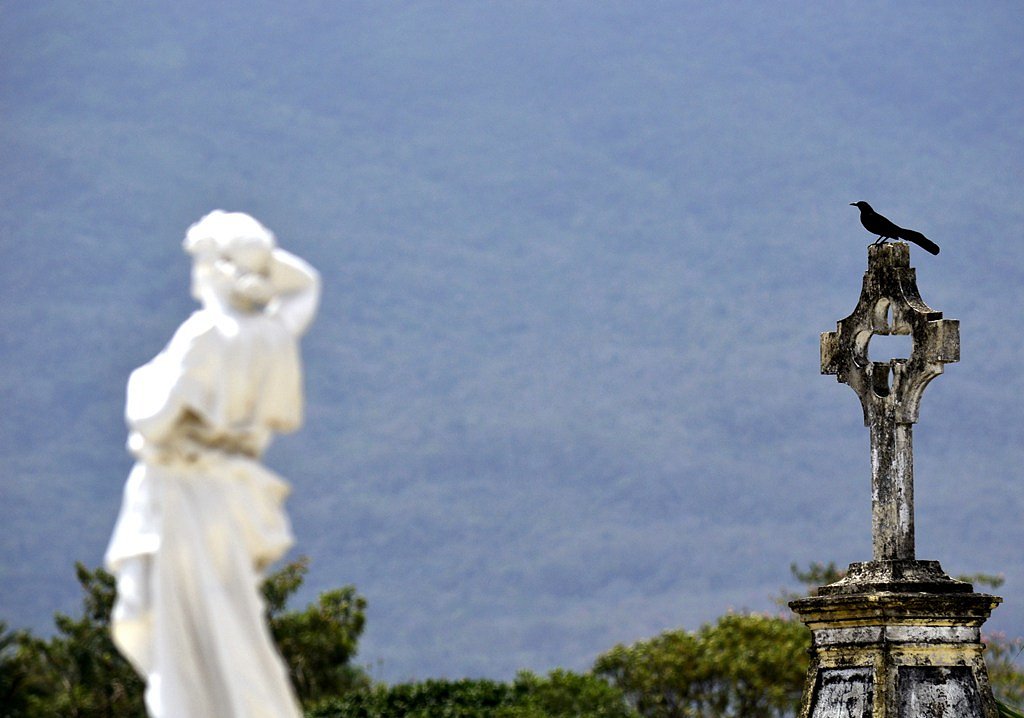Cementerio de Granada: A Beautiful and Historic Resting Place in Nicaragua

Cementerio de Granada is a historic cemetery located in the city of Granada, Spain. This cemetery was established in 1805 and has since become an important cultural and historical landmark in the region. The cemetery is known for its beautiful architecture, impressive monuments, and for being the final resting place of some of Spain's most famous figures.
The cemetery covers an area of over 42,000 square meters and is divided into different sections based on religion and social class. One of the most striking
Cementerio de Granada is a historic cemetery located in the city of Granada, Nicaragua. Established in the 19th century, the cemetery is one of the oldest and most important cultural landmarks in Nicaragua. The cemetery is known for its beautiful architecture, impressive monuments, and for being the final resting place of some of Nicaragua's most famous figures.
History of Cementerio de Granada
Cementerio de Granada was established in 1872 after a devastating cholera epidemic swept through the city of Granada. The epidemic claimed the lives of over 2000 people, and the existing cemeteries in the city quickly became overcrowded. The government of Nicaragua decided to establish a new cemetery to accommodate the growing number of bodies, and Cementerio de Granada was born.
The cemetery was designed by the French architect Jean Ramponneau, who was also responsible for designing some of the most iconic buildings in Granada, including the Cathedral of Granada. Ramponneau's design for the cemetery was inspired by the Père Lachaise Cemetery in Paris, and he incorporated elements of French and Spanish architecture into his design.
Architecture and Monuments
One of the most striking features of Cementerio de Granada is its beautiful architecture. The cemetery is home to a wide variety of mausoleums, tombs, and monuments, each one more impressive than the last. Many of these monuments are works of art in their own right, featuring intricate carvings and beautiful designs.
One of the most famous monuments in Cementerio de Granada is the mausoleum of the Somoza family. The Somoza family was one of the most powerful political families in Nicaragua during the 20th century, and their mausoleum is a testament to their wealth and influence. The mausoleum features a large statue of Anastasio Somoza Garcia, the former President of Nicaragua, and is adorned with marble columns and intricate carvings.
Another notable monument in the cemetery is the tomb of Rubén Darío, one of Nicaragua's most famous poets. Darío is considered one of the fathers of modernismo, a literary movement that originated in Latin America in the late 19th century. His tomb is a beautiful marble structure that is decorated with floral motifs and features a statue of Darío himself.
Other famous Nicaraguans who are buried in Cementerio de Granada include the writer Salomón de la Selva, the artist Armando Morales, and the revolutionary leader Carlos Fonseca.
Visiting Cementerio de Granada
Cementerio de Granada is open to visitors every day, and it is a popular destination for tourists and locals alike. Visitors can take a guided tour of the cemetery to learn more about its history and the famous figures who are buried there. The cemetery is also a popular spot for photographers, who come to capture the beauty of the monuments and the serene atmosphere of the cemetery.
One of the best times to visit Cementerio de Granada is during Dia de los Muertos, or Day of the Dead, which is celebrated in Nicaragua on November 2nd. During this holiday, families gather at the cemetery to honor their loved ones who have passed away. They decorate the graves with flowers, candles, and other offerings, and they spend the day remembering and celebrating the lives of their loved ones.
Cementerio de Granada is a beautiful and historic cemetery that is an important part of Nicaragua's cultural heritage. Its impressive architecture and monuments make it a must-see destination for anyone visiting Granada, and its serene atmosphere makes it a peaceful and reflective place for locals and visitors alike. Whether you are interested in history, art, or simply want to pay your respects to the deceased, Cementerio de Granada is a fascinating and beautiful place to visit.
In addition to its historical and cultural significance, Cementerio de Granada is also an important part of the local community. Many families have loved ones buried in the cemetery, and they visit regularly to pay their respects and maintain their gravesites. The cemetery is also an important part of the city's tourism industry, and it provides jobs and economic opportunities for many people in the community.
However, like many cemeteries around the world, Cementerio de Granada has faced challenges in recent years. The cemetery has become overcrowded, and there is a shortage of space for new graves. The cemetery is also facing financial difficulties, and there is a lack of funding for maintenance and repairs.
Despite these challenges, Cementerio de Granada remains an important part of Nicaragua's cultural heritage. The cemetery is a testament to the country's rich history and the contributions of its most famous figures. It is a place of beauty and reflection, where visitors can pay their respects to the deceased and learn more about Nicaragua's past and present.
In conclusion, Cementerio de Granada is a historic and culturally significant cemetery that is an important part of Nicaragua's heritage. Its beautiful architecture and impressive monuments make it a must-see destination for anyone visiting Granada, and its peaceful atmosphere provides a place for reflection and remembrance. While the cemetery faces challenges, it remains an important part of the local community and a vital part of Nicaragua's cultural landscape.